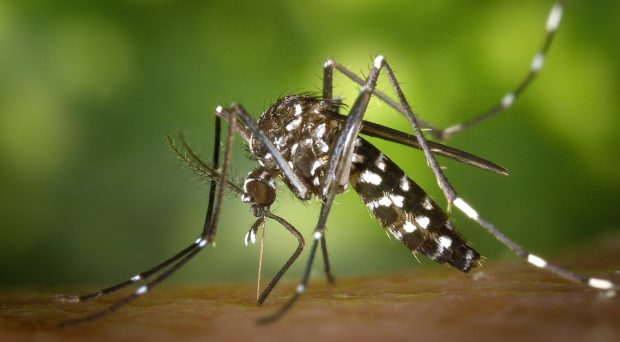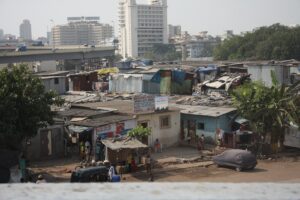
Per capita mortality rates across the globe are 300 times greater in developing nations than in developed nations. This higher mortality rate similarly occurs when comparing the affluent and the deprived areas within low-income countries, highlighting the statistic as a symptom of inequality. In addition, the impact of epidemics of vector-borne diseases on poorer countries has detrimental effects on areas of the economy such as tourism, widening global inequality.
Poverty promotes the spread of vector-borne diseases through inadequate access to healthcare and improper handling of waste and water.

This relationship between poverty and the spread of vector-borne diseases can be seen, for example, in Fortaleza, Brazil. Dengue fever has been endemic to the region since 1986, and there have been four major outbreaks within 20 years. Scientists found a significant difference between the presence of dengue fever and wealth. The affluent neighbourhoods have reliable access to healthcare, and can be treated if needed, and they often have their own separate water pumps, reducing the need to store water in containers that can become mosquito breeding sites. However, in deprived neighbourhoods, unreliable water access remains a severe problem. Although 80% of households have access to water, many either had it cut off due to being unable to afford it, or had to fill drums with water to be used throughout the day. In these poorer neighbourhoods, the number of households with dengue present ranged from 40% to 100%, conveying how social behaviours brought about by poverty fuel the spread of vector-borne diseases.
As much as economic inequality increases transmission, the presence of these diseases itself widens economic inequality.
Vector-borne diseases take a massive toll due to both the annual mortality rate, with deaths of approximately 400,000 for malaria and 40,000 for dengue fever each year, and the economic costs. The cost of malaria diagnosis and treatment is estimated to be US$12 billion a year, accounting for a quarter of family incomes.
Beyond the individual human impact level, vector-borne diseases create economic problems for the countries in which they are present. This is exemplified by the outbreak of the Zika virus in 2016, with the outbreak causing an estimated US$7-18 billion of damage through the impacts on healthcare and loss of tourism. A major long-term factor contributing to this is the secondary diseases caused by the Zika virus. These include microcephaly and Guillain-Barré syndrome, which are predicted to cost US$8 billion and US$3 billion respectively. These case studies show how vector-borne diseases contribute to global inequality through deaths and economic burdens, slowing growth in developing countries.

In the future, understanding the relationship between living conditions, particularly in urban environments, and the spread of vector-borne diseases will become more important. The human population is predicted to reach 10 billion by 2050, with an increase in urban populations in Africa, for example, doubling by 2030 compared to 2005. The rapid increase in urban populations – possibly resulting in the improper management of water storage and waste disposal, and the encroachment into natural environments, could both lead to an increase in interactions between humans and disease vectors.
There are, however, historical examples of how social changes can decrease vector-borne diseases, such as with the decline in malaria along the Ohio River. In the early 20th century, malaria cases declined due to a reduction in poverty. Better living conditions resulted in improved standards of housing and enhanced access to mosquito control strategies, lowering malaria transmission. This shows that social reform can reduce the number of people most at risk to exposure, controlling the spread of vector-borne diseases.
Even though economic development and poverty reduction have shown effectiveness in reducing vector-borne diseases, this isn’t a guaranteed strategy. An important step in developing an economy is through fixing water shortages and providing a stable electricity grid. Dams are often utilised to solve both these problems, however the reservoirs formed act as breeding grounds for vectors. The building of dams has increased malaria cases in sub-Saharan Africa by 1.1 million per year. The dams that created Lake Volta in Ghana, and Lake Nasser in Egypt, caused epidemics of schistosomiasis by increasing the habitats for the snail vectors. These increases show that there is no one-size-fits-all approach to preventing the spread of vector-borne diseases, emphasising how any successful approach needs to be multifaceted.
A feedback loop has formed in low-income countries; vector-borne diseases and poverty exacerbate each other. This relationship, illustrated by the spread of a variety of diseases across poorer countries, shows how entrenched this cycle is. Even though there are cases where the decline in poverty reduces the spread of vector-borne disease, this is not a consistent relationship. The differences in the outcomes that poverty reduction strategies have had emphasises the need for further research into the best strategies that allow for socioeconomic growth alongside a reduction in disease burden.

Comments